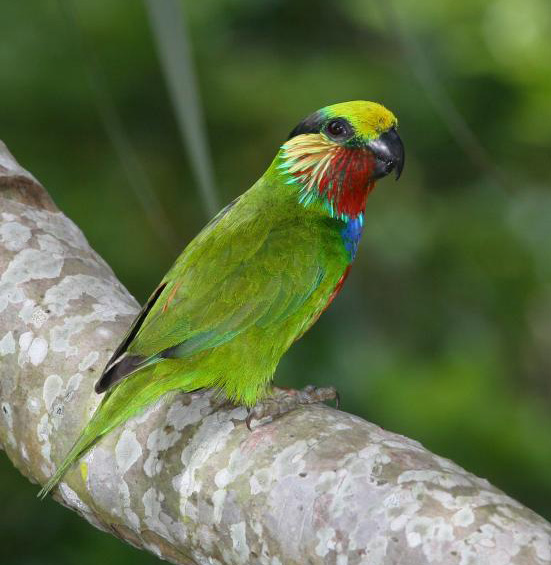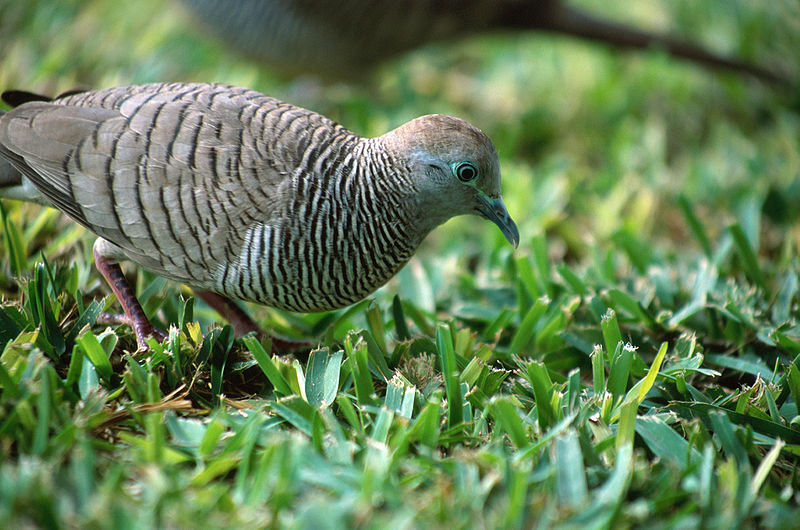The world’s approximately 330 parrot species, while superficially similar in body plan, exhibit an incredible diversity of lifestyles. To those I have highlighted on this blog I would now like to add the long-billed corella (Cacatua tenuirostris), a unique cockatoo which spends much of its time as does none other – digging in the ground for food!
A Distinctive Bill
A long, rather thin and pointed upper mandible (bill) immediately distinguishes the long-billed corella from other cockatoos. Its favorite foods – roots, tubers and, on occasion, insect larvae – are equally unique for a parrot. The beak functions as a very effective digging tool, and allows the corella to take seeds and other more typical parrot foods as well.
Range and Habitat
 The 2 subspecies of long-billed corella live widely separated from one another, and are restricted in distribution to extreme southeast and southwest Australia. Their ranges have shrunk in recent years due to a drier climate (they require standing water and high rainfall) and land use changes. Feral populations are established in Perth, Sydney and other Australian cities.
The 2 subspecies of long-billed corella live widely separated from one another, and are restricted in distribution to extreme southeast and southwest Australia. Their ranges have shrunk in recent years due to a drier climate (they require standing water and high rainfall) and land use changes. Feral populations are established in Perth, Sydney and other Australian cities.
Corellas favor open woodlands, savannas and the edges of watercourses and farms. They leave their roosts to drink before dawn, and always employ a sentinel perched high in a tree when feeding.
In addition to roots and tubers, they feed upon planted grain, maize and fruits as well, and are hunted as agricultural pests in some areas. Corellas nearly always nest in hollows high in living trees near water…the loss of these unique nesting sites may also be playing a role in recent population declines.
Corellas as Pets
Late to enter the pet trade, long-billed corellas are now becoming quite popular as pets in their native Australia. Their abilities to mimic speech are said to be quite impressive, and captive breeding is now fairly routine.
Further Reading
You can learn more about the natural history of these most unusual cockatoos at http://www.birdsinbackyards.net/finder/display.cfm?id=101.
Image referenced from Wikipedia and originally posted by Snowmanradio
 That Bird Blog – Bird Care and History for Pet Birds
That Bird Blog – Bird Care and History for Pet Birds

 Fig parrots are small, stocky, colorful birds limited in distribution to New Guinea, northeast Australia and some nearby islands.
Fig parrots are small, stocky, colorful birds limited in distribution to New Guinea, northeast Australia and some nearby islands. Grass parakeets are strong, swift fliers that zip about erratically and change direction frequently. They therefore show themselves to best advantage in an
Grass parakeets are strong, swift fliers that zip about erratically and change direction frequently. They therefore show themselves to best advantage in an  The zebra dove ranks just behind the closely related diamond dove and the ring dove in popularity, and captive bred birds are readily available. Ranging from Thailand south through Malaysia and Indonesia to Australia, escaped and released zebra doves are also established in Hawaii, Madagascar, California and other places.
The zebra dove ranks just behind the closely related diamond dove and the ring dove in popularity, and captive bred birds are readily available. Ranging from Thailand south through Malaysia and Indonesia to Australia, escaped and released zebra doves are also established in Hawaii, Madagascar, California and other places. Gouldian finches require more room than similarly-sized finches…there is some evidence that cramping may lead to metabolic disorders. Please provide yours with a
Gouldian finches require more room than similarly-sized finches…there is some evidence that cramping may lead to metabolic disorders. Please provide yours with a